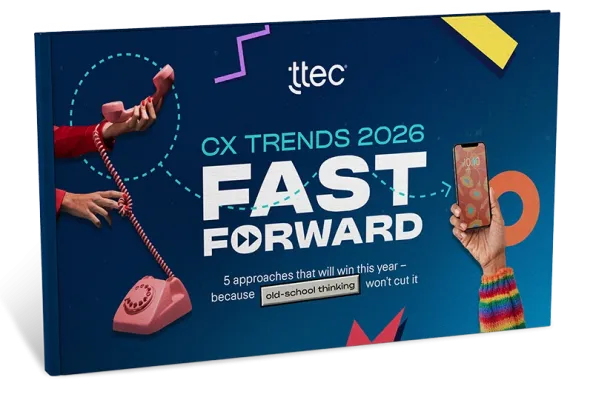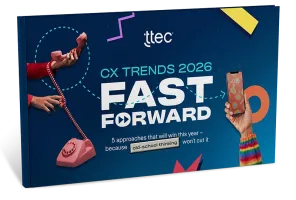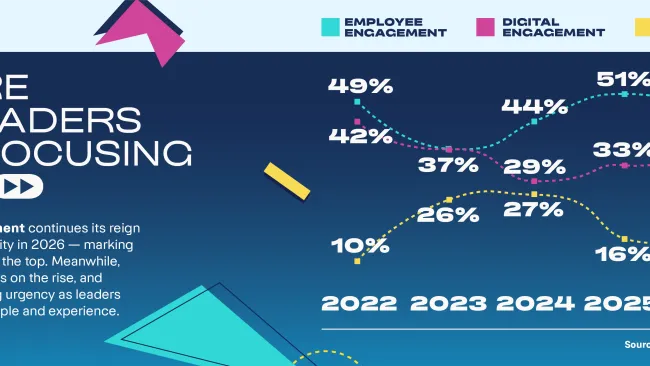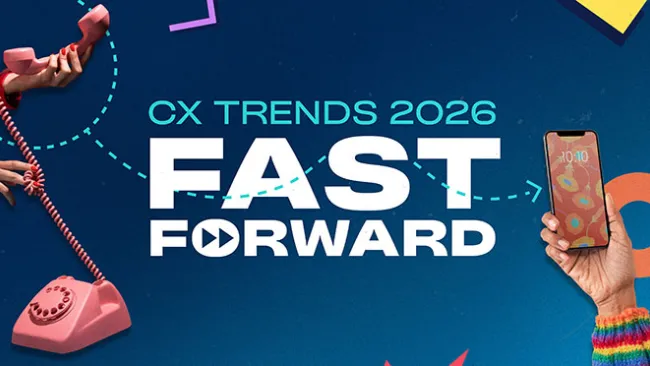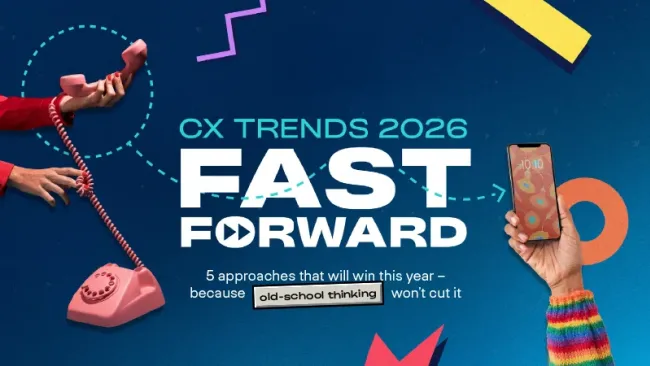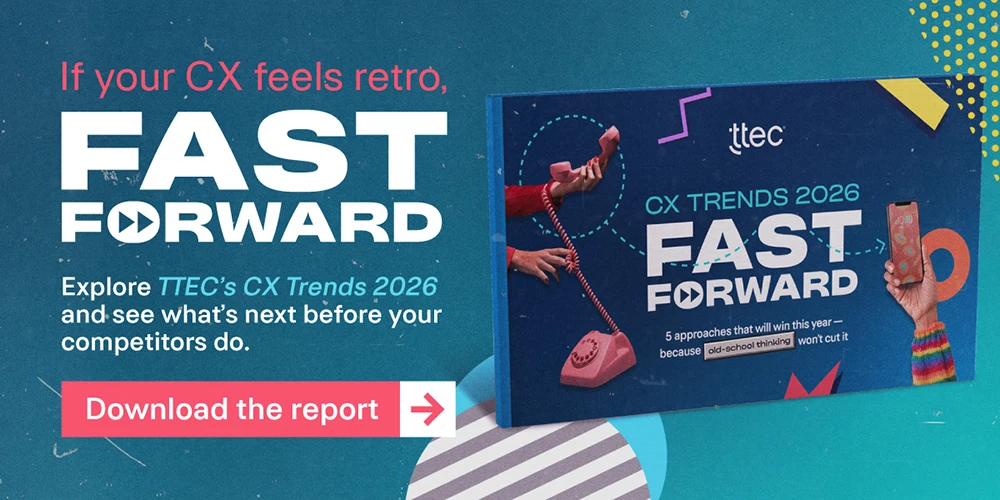We’ve all been there: excited to roll out a new technology that promises to solve pain points within the contact center, only to be disappointed by lackluster results after a lot of time and money has been invested. It doesn’t improve efficiency, spur revenue growth, or improve customer experience (CX) or employee experience (EX) the way it was envisioned – and the finger pointing begins.
When a technology transformation disappoints, many organizations view it as a failure of the technology itself; it simply didn’t live up to the hype that was promised by the platform vendors, system integrators, or internal IT department.
But when technology investments “fail,” it’s usually less about the tech and more about three common pitfalls in transformation initiatives that brands should focus on to ensure they get the most out their investments.
1. Undefined or unrealistic outcomes
Before investing in any transformation, you need a clear business case with defined and measurable outcomes, goals, and metrics. When technology falls short, it’s often because a tool was implemented with either unrealistic objectives, no clear way to attribute results, or no consensus on what success looks like.
To avoid this pitfall, define goals and how they will be measured. Perhaps the goal is improving NPS or CSAT, reducing AHT, reducing licensing costs, deflecting volume to reduce overall associate headcount, shortening training time, improving marketing campaign effectiveness, or growing the top lines through improved sales processes and/or incorporation of service-to-sales.
Establish your goals, clearly communicate them to stakeholders, and pinpoint the KPIs that need to be tracked. Internal teams often have misperceptions about a given technology’s true capabilities and fit for their organization (positively or negatively), so it is important to be realistic about the improvement that can be expected and the time it will take to achieve it.
If your team lacks the needed expertise in-house, a CX technology partner can help you cut through marketing jargon and generalized improvement claims to advise on what the technology is truly capable of given your particular scenario and set realistic expectations.
Recognize that some benefits will take longer to achieve as associates adapt to the new technology, and conduct three discreet measurements to prove your business case:
- Benchmark performance prior to the transformation
- Validate expected gains (where possible) prior to production by testing key flows in the new system and make modifications as needed or recalibrate expectations prior to Go Live
- Validate expected gains with associates in production – both at the outset and again three to six months later when proficiency has been reached and optimize as needed
Compiling this data eliminates guesswork and gives contact center leaders a clear picture of how the technology actually impacts workflows and where to prioritize optimization efforts.
2. Lack of associate involvement
For a technology transformation to make a true impact, it must benefit the end user -- the associate. Yet too often there’s a disconnect between requirements gathering and launch.
Business leaders and end-user associates are often engaged up front to define their workflows, pain points, and what they want to get out of the technology. In the Discovery phase, it’s important to not only solicit end-user feedback but also watch them work; 99% of the time you will find unarticulated needs and discrepancies in the way associates actually work versus what is documented as “the process.”
Once the business signs off on requirements, the IT department often decides whether a certain technology meets their needs and whether the technical requirements and ultimate design will meet those requirements. Too often it’s uncovered in user acceptance testing (UAT), the final stage of development, that the design won’t work for end-user associates.
Solve for this by involving associates throughout the process. Their perspective is extremely valuable when assessing whether tools will meet their needs which, ultimately, will drive the desired results.
Let them react to proposed designs and wireframes prior to the actual build. Include them as part of the UAT team. Beyond standard UAT scripts, encourage them to “play” with the technology and try to “break” the system. In an agile development model, an entire workflow may be built over several sprints, so it’s important for associates to test the end-to-end experience to ensure workflows hang together without friction.
Tapping into associates’ perspectives can save organizations time, money, and headaches in the long run. If your brand lacks the required expertise in-house, a CX technology partner can advise on how best to leverage production associates in this process. A good partner will take the time to dive deeply into your business goals and employee culture to create a customized path toward success.
3. Adoption barriers
Many tech implementations fail to meet expectations because associates don’t adopt the new systems. This can happen for several reasons: muscle memory and habits are hard to break, associates may lack trust due to past tech rollouts, bugs or inferior design may be frustrating, or associates may feel they haven’t been adequately trained in how to use new tools.
In some contact centers, technology changes and upgrades happen so frequently it can be hard for associates to keep up – even if they’re motivated to embrace to new technology.
There are many possible reasons why associates don’t adopt technology. Don’t guess what’s holding them back – ask them and “trust but verify.” Conduct focus groups to understand how they perceive the technology, ask why they aren’t using a specific tool as intended and how it could be more easily integrated into their workflows. Then sit down in side-by-sides to see for yourself how the tool is working in production. As noted above, 99% of the time you’ll identify things that didn’t come up in focus groups.
Once you have a clear view of the adoption barriers, it’s time to take action. Identify and prioritize what will have the biggest impact: is it improved communication? Enhanced training? System improvements? Be sure to include quick wins that demonstrate to associates you value their feedback and are working to make the system work for them versus the other way around.
If the pace of change is a barrier, work with your IT department to manage the complexity and frequency of technology upgrades. Manage change by creating an orchestrated plan that considers the communication and training required for end-user associates to absorb the change. It is better to delay enhancements in favor of a sound change management approach than roll them out prematurely and risk the functionality not being used or creating inefficiency due to confusion.
If your in-house team lacks the needed knowledge, tap into a CX technology partner. A strong partner can help design, implement, and oversee a process to collect associate feedback; analyze that feedback to pull insights; and evolve insights into actions. A good partner also will help ensure the IT and contact center operations teams are aligned before, during, and after a technology launch.
It’s not over at launch
There’s always room for improvement when it comes to a technology transformation, even when it’s meeting your business goals at launch. CX and technology are two fast-evolving landscapes and navigating their intersection can be daunting.
It’s important to stay agile and strive for continuous improvement. Technology isn’t something you launch, put on autopilot, and expect to deliver continuous ROI. There are always new features, tools, and options to explore. Technology that delivered great results a year ago may no longer be getting the job done. And the contact center is always encountering new opportunities, challenges, and needs. Processes and business models that worked in the past may become outdated based on changing customer expectations or competitive actions.
All this flux is a lot to manage, especially if it’s not among your organization’s core competencies. But you don’t have to do it alone. Working with a trusted CX technology partner is a great way to stay abreast of emerging technologies and innovations, plan for platform upgrades, manage adoption, and identify people, process or policy changes needed based on best practices so your organization will be freed up to focus on what they do best.

